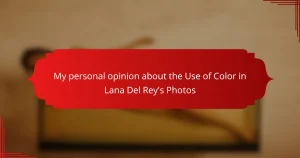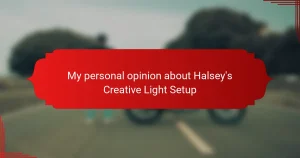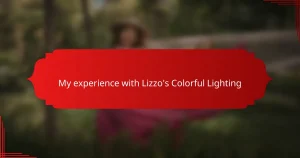Key takeaways
- Lighting is essential in female singer photography, enhancing emotion and storytelling in music videos, as exemplified by Billie Eilish.
- The interplay of shadows, colors, and lighting techniques contributes to the mood, creating connections between the viewer and the artist.
- Different lighting styles evoke various emotions, with low-key lighting adding intensity and soft lighting fostering intimacy.
- Eilish’s unique visual style uses lighting to reflect her emotional themes, often employing unconventional techniques to deepen the viewer’s experience.

Overview of Female Singer Photography
In the realm of female singer photography, lighting plays a crucial role in conveying emotion and enhancing the artistic vision. Think of Billie Eilish’s music videos; the lighting choices elevate not just her performance but also the storytelling. There’s a certain magic that comes from how shadows and colors blend to create a mood, reflecting the depths of the song’s themes.
I’ve often found myself captivated by the way light interacts with a singer’s presence on screen. It’s not just about making the subject look good; it’s about telling a story through illumination. The subtle shifts in lighting can evoke feelings of nostalgia, excitement, or even melancholy. That connection between the viewer and the artist is palpable and deeply moving.
- Use of natural light vs. artificial light in capturing authenticity.
- Importance of shadows in creating intensity and adding depth.
- Color temperature’s impact on the mood of the photograph.
- The balance of foreground and background lighting for storytelling.
- How lighting can direct the viewer’s attention to specific elements.
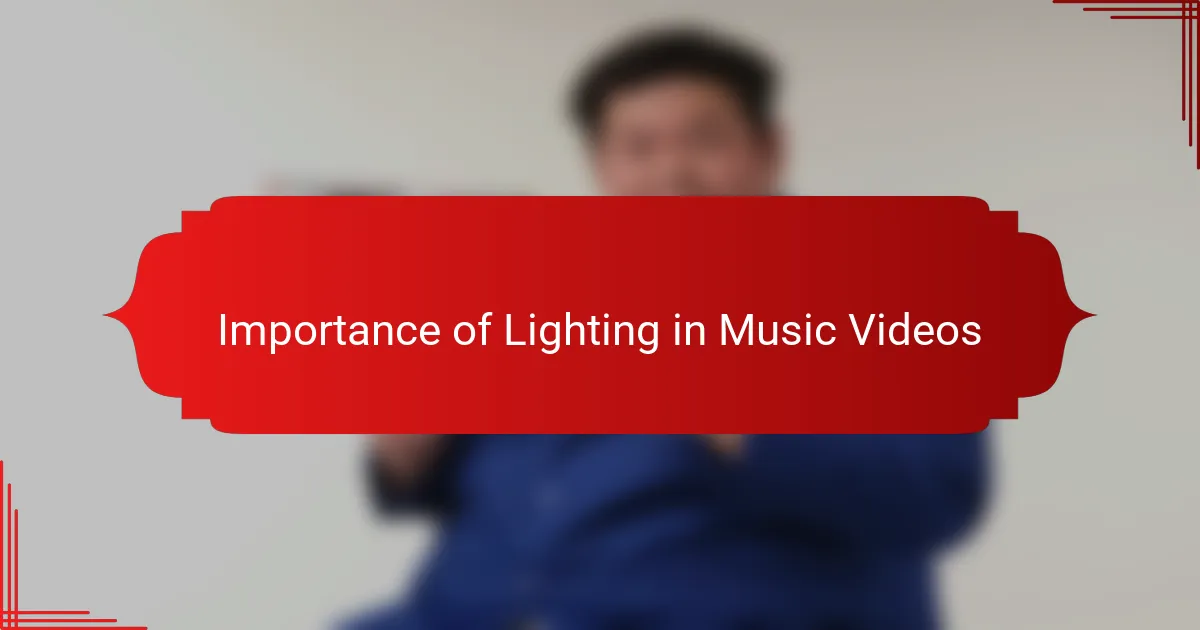
Importance of Lighting in Music Videos
Lighting plays a crucial role in music videos, greatly influencing mood and aesthetic. Through my experience, I’ve noticed that the right lighting can transform a scene, drawing viewers deeper into the narrative. For Billie Eilish’s videos, the interplay of shadows and highlights creates a haunting atmosphere that complements her unique style and lyrical themes.
Additionally, lighting can evoke specific emotions. I remember watching “When the Party’s Over” and being struck by the way soft, low lighting intensified the song’s melancholic tone. It’s fascinating how much the visual presentation can enhance or even redefine the music experience.
Here’s a comparison table that highlights the differences in lighting approaches in various contexts:
| Aspect | Billie Eilish |
|---|---|
| Color Palette | Muted, often contrasting tones that set a moody atmosphere |
| Light Source | Utilizes natural and artificial lighting to create depth |
| Emotional Impact | Enhances feelings of vulnerability and introspection |
| Shadow Play | Strategic shadows add mystery and enhance storytelling |
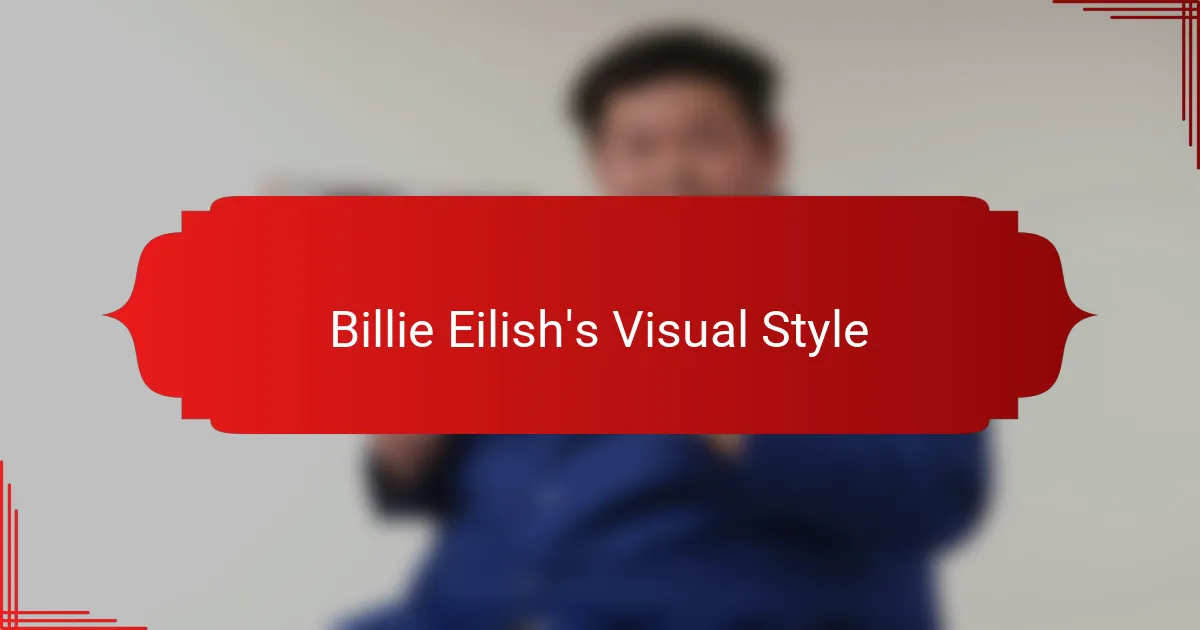
Billie Eilish’s Visual Style
When it comes to Billie Eilish’s visual style, her music videos are an emotional journey. I find her use of lighting particularly powerful; it creates an atmosphere that resonates deeply with the themes of her songs. For instance, in “When the Party’s Over,” the dim lighting paired with the stark contrast of color emphasizes feelings of isolation and vulnerability, inviting viewers to connect on a personal level.
The interplay of shadows and light in her work often tells a story of its own. I appreciate how she uses lighting to reflect her emotions and to elevate the narrative of her music. It’s like each video complements the lyrics, making me feel the weight of her messages even more.
Here’s a quick comparison of lighting elements in some of her notable music videos:
| Music Video | Lighting Style |
|---|---|
| When the Party’s Over | Dim, muted colors with sharp contrasts |
| Bad Guy | Bright, surreal colors with dramatic shadows |
| Everything I Wanted | Soft, ethereal lighting creating a dreamlike quality |
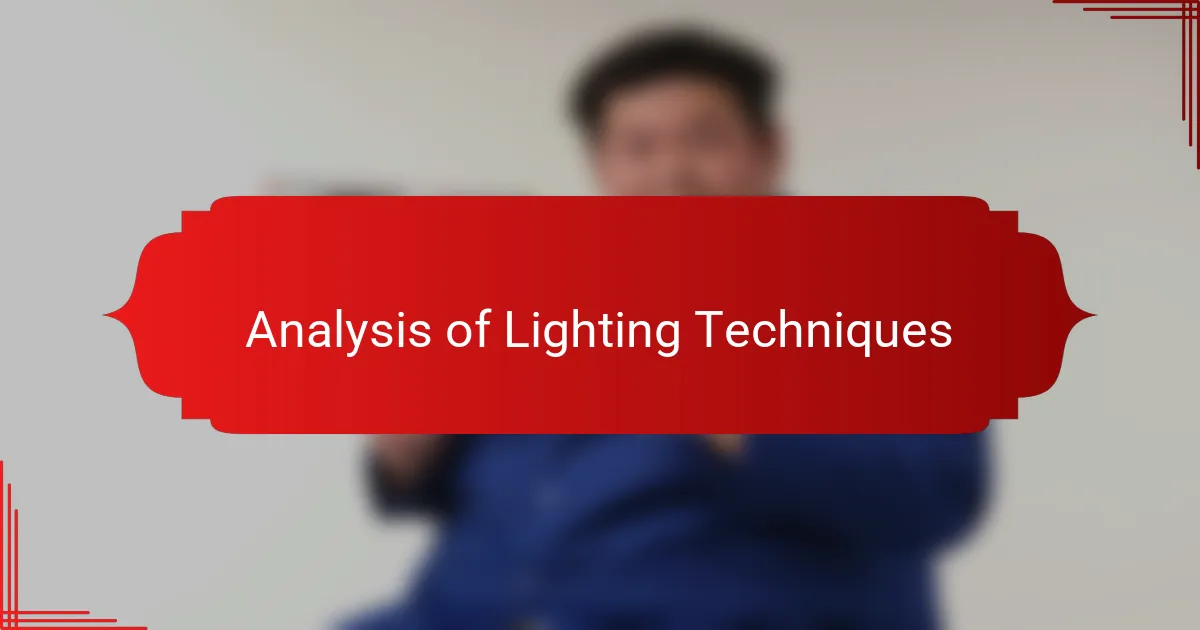
Analysis of Lighting Techniques
When I analyze the lighting techniques in Billie Eilish’s music videos, I can’t help but notice how they amplify her unique aesthetic. The dark, moody palettes often evoke feelings of introspection and vulnerability, mirroring the themes in her lyrics. I remember watching “When the Party’s Over” for the first time and being struck by the stark contrast between the shadows and highlights, which seemed to almost breathe life into her haunting voice.
One of the key lighting elements I see across her work includes:
- Low-key lighting: This creates dramatic shadows, enhancing emotional depth and maintaining a sense of mystery.
- Color gels: Bright, saturated colors are often used to evoke specific moods or themes, shifting the atmosphere dramatically throughout her videos.
- Soft lighting: At times, softer light is employed to create an intimate feeling, making the viewer feel closer to the artist.
- Backlighting: This technique often outlines Billie, giving her an ethereal presence that draws viewers’ attention.
- Natural light: Occasionally, she uses daylight to create a sense of authenticity, grounding her more fantastical themes in reality.
These techniques contribute to her distinct storytelling style, combining visual artistry with musical emotion in a way that’s truly captivating.
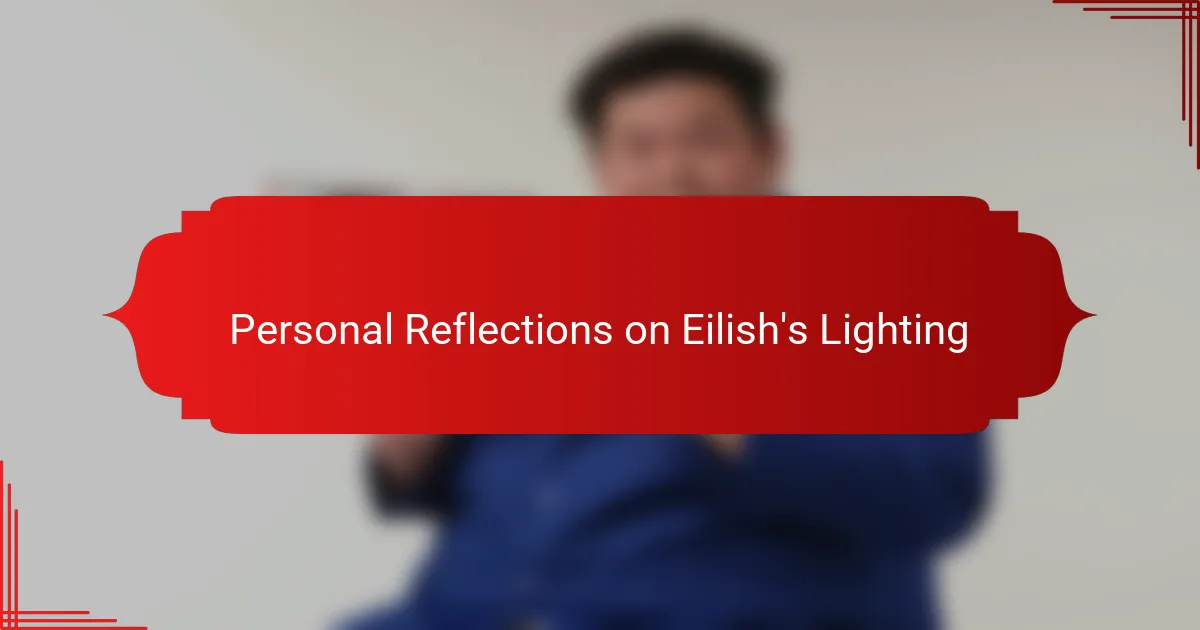
Personal Reflections on Eilish’s Lighting
When I think about the lighting in Billie Eilish’s music videos, I’m struck by how effectively it conveys mood and emotion. For instance, in “When the Party’s Over,” the dim, almost haunting illumination enhances the sense of vulnerability she portrays. I remember watching it for the first time, completely captivated by how the shadows wrapped around her, forming a stark contrast to the emotional weight of the song.
Eilish often plays with unconventional lighting techniques that not only highlight her unique aesthetic but also tell a story in every frame. It’s like she uses light as a brush to paint her feelings, creating a visual language that resonates deeply with her audience. I find myself drawn in, reflecting on my own experiences with isolation and melancholy, which are echoed in the shadows and colors she chooses.
- Soft, moody lighting often emphasizes themes of vulnerability and introspection.
- Bright, stark contrasts can create a sense of tension or urgency, as seen in “Bellyache.”
- Creative use of color that reflects the song’s emotional landscape, such as the greens and blues in “Everything I Wanted.”
- Shadows seem to play an active role, often mirroring Eilish’s emotional state.
- Overall, the lighting choices feel deliberate and serve to enhance the storytelling in her videos.
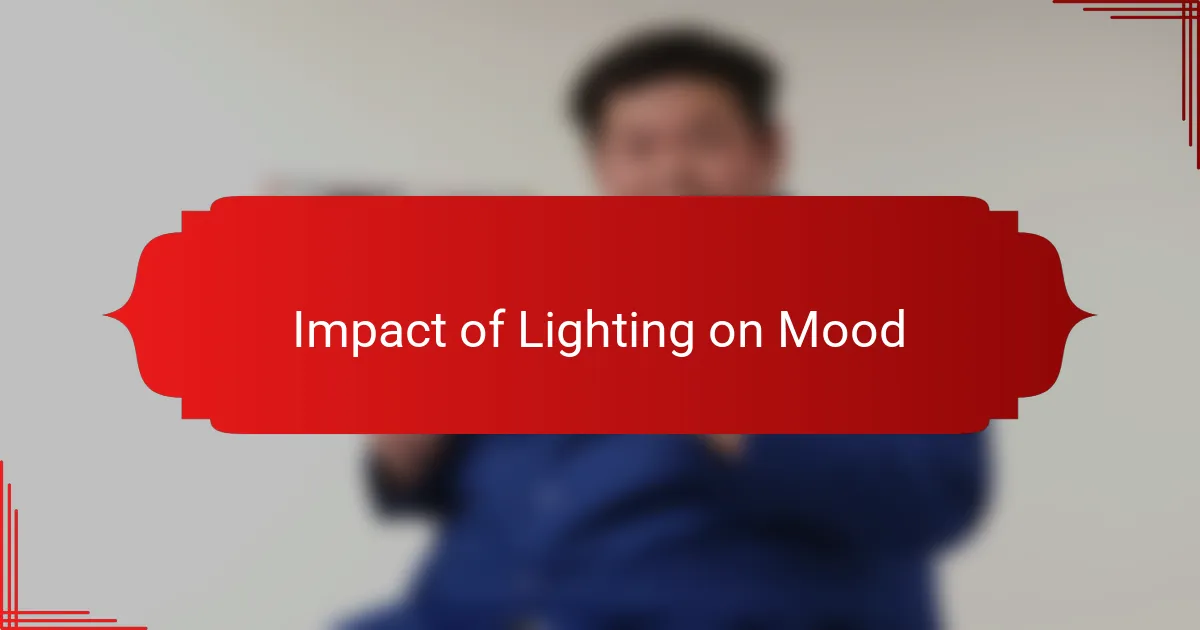
Impact of Lighting on Mood
Lighting in Billie Eilish’s music videos strikes me as a powerful tool for conveying mood. For example, I find it fascinating how dim, low lighting can create a sense of isolation, drawing me into her world. In a recent viewing of “When the Party’s Over,” I was captivated by how the low light wrapped around her, intensifying the emotional weight of the moment. It makes me wonder: how does light, or the lack thereof, shape our perceptions of emotional authenticity?
There’s something undeniably profound about the interplay between shadows and light. I often notice that the dramatic shadows in her videos not only add mystery but also enhance the storytelling. For instance, when Billie appears half-shadowed, it evokes a longing — you can almost feel her contemplation. It begs the question: isn’t it amazing how subtle shifts in lighting can impact the narrative we perceive?
Color temperature is another element that plays a significant role. I remember feeling a wave of nostalgia as the cooler tones washed over me in “Everything I Wanted.” It perfectly captured the song’s essence, reinforcing Eilish’s messages about vulnerability and introspection. In that moment, I realized how beautifully lighting can shape our emotional connection with the art.
